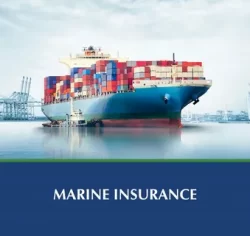Directors and Officers Insurance: What Is It, Who Needs It?
Directors and Officers Insurance: What Is It, Who Needs It?
What Is Directors and Officers Liability Insurance?Directors and officers (D&O) liability insurance will be insurance coverage intended to protect individuals from personal losses on the off chance that they are sued because of filling in as a director or an officer of a business or other kind of organization.
It can also cover the legitimate charges and other costs the organization might cause because of such a suit.
Understanding Directors and Officers (D&O) Liability InsuranceLiability Insurance
D&O insurance applies to anyone who fills in as a director or an officer of a for-profit business or nonprofit organization.
A D&O insurance policy protects against personal losses, and it can also assist with repaying a business or nonprofit for legitimate charges or other costs incurred in defending such individuals against claims.
D&O insurance claims are paid to directors and officers of a company or organization for losses or repayment of defense costs if legitimate action is brought against them.
Such coverage can also extend to criminal and regulatory investigations or preliminary defense costs. Common and criminal actions are often brought against directors and officers simultaneously.
D&O insurance is likened to corporate governance, corporate regulation, and the fiduciary duty owed to stakeholders, like shareholders and recipients. U.S. federal regulation awards directors and officers broad discretion in their business activities. Corporate regulation is normally handled at the state level.
Public corporations are dependent upon more federal regulation than secretly held companies, especially due to the Protections Act of 1933 and the Protections Trade Act of 1934.
Kinds of Directors and Officers Liability Insurance
The ordinary D&O insurance policy contains three kinds of guaranteeing arrangements. They’re referred to as Side A, Side B, and Side C.
Side A coverage covers directors and officers for claims where the company declines to or is monetarily incapable to pay for indemnification.
This can occur, for instance, on the off chance that the company has declared liquidation. Under Side A coverage, the individual officer is the one who’s insured, and their resources are in danger.
Side B coverage covers the losses of directors and officers when the company does concede indemnification. In this situation, the policy will repay the company for legitimate costs. Under Side B coverage, the company is insured while its corporate resources are in danger.
Side C coverage also called “element coverage” extends coverage for the corporate substance itself. Under Side C coverage, the company is insured, and its corporate resources are in danger.
The exact coverage that a company goes with at last depends on its one-of-a-kind plan of action characteristics, needs, history, and monetary picture.
Directors and Officers Liability Insurance Process
The process of D&O insurance, in actuality, is straightforward. Everything begins when a director allegedly neglects to perform their role.
Some common gamble scenarios include employment malpractice, reporting errors, erroneous disclosures, insolvencies, and regulation violations. Subsequently, a few inquirers decide to sue the chief.
Once the director and the lawful/risk executives departments are informed of the case, they then describe the case to their broker/guarantor. Assuming the case is covered, the safety net provider covers the defense costs. Assuming that the case is covered and the case is lost, the backup plan pays for the defense costs and the monetary losses.
Of course, that model vigorously depends on the agreements of the particular policy.
D&O insurance has become closely associated with broader administration liability insurance, which covers the liabilities of the corporation, as well as the personal liabilities of the directors and officers of the corporation.
Exceptional Considerations
D&O policies can take different forms, depending on the idea of the organization and the dangers it faces. It’s ideal to search for an insurance company with deep involvement in this specialized field. The policies are by and large purchased by the organization to cover a group of individuals instead of by the actual individuals.
If a company neglects to disclose material information or resolutely provides wrong information, the guarantor might avoid installment due to misrepresentation.
The “severability statement” in the policy conditions might be intended to protect against this by keeping misconduct by one insured from influencing insurance for other insureds; however, in specific jurisdictions, it could be inadequate.
Policies can be composed to guarantee against various hazards, yet they for the most part make exclusions for fraud, crime, and unlawful profits. Also, most policies contain “insured versus insured” provisions, by which no case is paid when current or former directors and officers sue the company. This keeps the company from profiting from deceit or conspiracy.
Do I Need D&O Insurance?
It depends on the size and nature of your business. Be that as it may D&O insurance, taking everything into account, should seriously be considered. A Chubb study showed that more than 25% of privately owned businesses reported a D&O loss over the range of three years, with 96% being harmed monetarily.
So while D&O insurance isn’t required for every business, in each situation, any reasonable person would agree that any company with a board of directors should consider D&O insurance.
Do Private companies Need D&O Insurance?
Private companies aren’t resistant to costly claims. It very well may be not difficult to expect that claims and fines are only triggered by disgruntled shareholders.
That is the situation with high-profile suits against huge public companies. However, for privately owned businesses, the most damaging suits are brought by customers, vendors, and other third gatherings.
Little companies may be extraordinarily defenseless against a potentially damaging claim since they don’t have the monetary muscle that bigger companies might have.
How Much Does Directors and officers Insurance Cost?
The cost of D&O insurance can shift widely depending on factors like company size, industry, risk craving, monetary position, income, and cases history.
All else equivalent, organizations that have a long operating history will probably pay not exactly younger organizations. Insurance commercial center Insureon found that the median cost of D&O safety net providers for its customers was $1,240 yearly.
What Kind of D&O Insurance Should I Purchase?
The sort of D&O insurance you choose depends on what your company needs and what it can afford.
The following are a couple of primary interesting points — should the policy simply cover supervisors (Side A) or the company as a whole (Side B and Side C)? How much coverage is enough? What are the greatest D&O takes a chance with your company, specifically, faces?
What Does D&O Insurance Cover?
D&O insurance ordinarily covers legitimate expenses, settlements, and monetary losses when the insured is held obligated. Common allegations covered include breaks of fiduciary duty, inability to comply with regulations, absence of corporate governance, creditor claims, and reporting errors.
Outright fraud, crime, and claims between supervisors inside a similar company are generally not covered.


